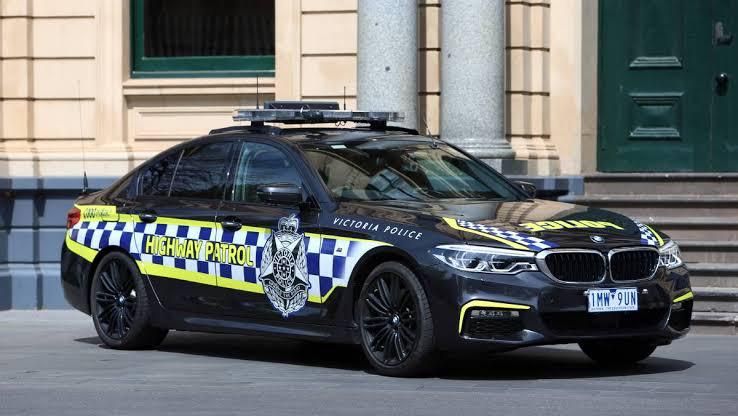License plate cloning is not uncommon. This type of vehicle identity theft which involves copying a car’s registration number and assigning it to another vehicle is typically used for illegal activity and has serious repercussions on the number plate’s registered owner, who will have to prove the plate was cloned to avoid hefty fines. Car cloning is becoming a growing concern worldwide. For example, London registered a staggering 857% increase from 2021 to 2022, claiming there is “cloning crimewave.” Similarly, Florida says vehicle cloning is on the rise, while New Zealand has sounded the alarm about this problem for a couple of years.
However, it used to be that license plate cloning was more of a physical crime, whereby the actual number plates are lifted and stolen from the vehicles, which is much easier for the true owner to detect. Instead, new modalities have come to the forefront in the last decade that allows criminals to replicate a license plate, including 3D printing.
ABC News Australia reported this month that criminals increasingly use 3D printers to make false license plates, which are then used to commit crimes ranging from robbery and fuel drive-offs to toll evasions and property offenses. Later, the unsuspecting motorists discovered that their license plates were cloned and used to commit serious crimes.
This is not the first time we have heard about 3D printers being used to clone car plats. In 2018, in Melbourne, Australia, Inspector Bruce Kitchen had already described how criminals were using car sales websites, like classified ad site Gumtree, to find license plates and 3D printers to clone them. This led to many online sites urging users to blur registration numbers when selling vehicles.
Then in 2020, detectives from Victoria Police‘s Frankston Crime Investigation Unit arrested two people following a six-month investigation into the alleged manufacturing and sale of cloned number plates. As stated by Detective Sergeant Nick Lamb, who led the operation, “police know that number plate theft and cloning is often at the center of more serious offending.”
In Victoria, number plate theft has been an ongoing problem for years, with nearly 15,000 number plate thefts recorded in 2021. Thieves were usually known to remove plates from the cars and then transfer them to their vehicles to commit crimes, often with stolen cars. Like a physical plate swap, cloned 3D-printed plates are difficult to discern. To counteract this threat, Victoria has added an extra level of authentication, making it harder for them to be illegally copied.
The new markings are similar to holograms embedded in the production of Australian banknotes. Unable to be removed using chemicals or physical force, the security markings will ensure that no reproduction of number plates is possible, said the local government. Launched in December 2022, the markings were developed with input from local police and the Department of Justice and Community Safety as a solution to combat number plate theft and cloning.
Victoria Minister for Police Anthony Carbines said, “We know that number-plate theft has been a growing problem in Victoria – these new Directional Security Markings add an additional layer of security that will stop theft and help reduce crime.’’
One of the side effects of the technology has been its use in delinquent activities. Aside from being utilized for cloning plates, 3D printing has been leveraged to create gun parts and entire weapons. Although 3D printed weapons haven’t played a massive role in actual criminal violence, law enforcement agencies increasingly seize 3D printed firearms every month during investigations. Furthermore, new police records indicate that this trend is going to continue, and that is why regions like the Western Australian police announced the creation of databases and programs to combat the threat of 3D printed weapons.
According to data collected by 3DPrint.com, Australian police have been tracking illegal 3D printing of weapons since 2015, and now 3D printed cloned license plates pose a new threat, one that can enable other crimes.
Subscribe to Our Email Newsletter
Stay up-to-date on all the latest news from the 3D printing industry and receive information and offers from third party vendors.
You May Also Like
3D Printing Unpeeled: Biofuel Waste to Filament & Sustainable Photopolymers
I can’t ever remember a day with so many potentially high impact news stories have come out. In one story, we all know that there are problems with the safety...
Finnair Hires AM Craft to 3D Print Plastic Parts for Aircraft Interiors
Riga-based AM Craft, a supplier specialized in 3D printing aviation components and certified under EASA Part 21G, announced a significant achievement today. The company will assist in upgrading Finnair’s A320...
3DPOD Episode 198: High Speed Sintering with Neil Hopkinson, VP of AM at Stratasys
Neil Hopkinson, a pioneering 3D printing researcher, played a pivotal role in developing a body of research that is widely utilized today. He also invented High Speed Sintering (HSS), also...
3D Printing Webinar and Event Roundup: May 12, 2024
Webinars and events are picking up in the AM industry this week! ASTM International continues its Professional Certificate Course and Stratasys continues its advanced in-person trainings, while 3D Systems is...


































